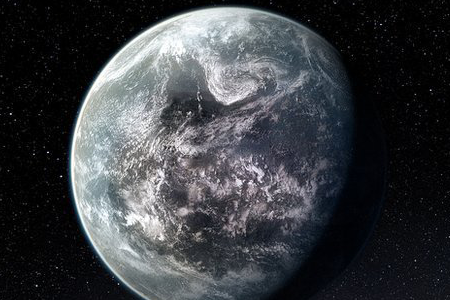50 New Exoplanets Found, Including Possibly Inhabitable Super-Earth. Space Geek Swoon.

We can now purvey deep into the cosmos, gobbling up planetary findings like it isn’t any thang. The scientists found these planets using a fancy spectrograph thing far beyond my fat-brained comprehension. Oh yeah, and 16 of these planets are super-Earths. One within its star inhabitable zone. ‘Possibly inhabitable’. Have to love the hyperbole. Whatever though, brah and brahettes, begin your fantasizing.
io9:
HD 85512 b is a rocky planet about 3.6 times the mass of Earth, located right at the edge of its star’s habitable zone. That means it’s capable of supporting life… and the early results suggest it’s a very real possibility.
It’s one of 50 new exoplanets discovered by the HARPS team at the La Silla Observatory in Chile, which is part of the European Southern Observatory. This is the largest number of exoplanets ever discovered at one time, and it brings the number of confirmed exoplanets up to about 600. (The Kepler Space Telescope discovered 1,200 exoplanet candidates at one time, as opposed to confirmed planets.)Recently, HARPS offered some of the most damning evidence yet that Gliese 581 g, the first rocky exoplanet discovered in its planet’s habitable zone, does not, in fact, exist. That’s the culmination of months of controversy about the planet’s status, and it leaves Gliese 581 d as the only known potentially habitable exoplanet, albeit one that enjoys far less ideal conditions than Gliese 581 g theoretically would have had.
But HARPS has found us a new planet to make up for the loss of Gliese 581 g, which could well be habitable. HD 85512 b is one of five planets discovered by the HARPS team whose mass is less than five times that of Earth. That puts it in the Super-Earth category, a type of rocky planet that is up to twenty times the mass of Earth. Although there are no such planets in our own solar system, they appear to be very common elsewhere in the galaxy.
Ah, to dream.



